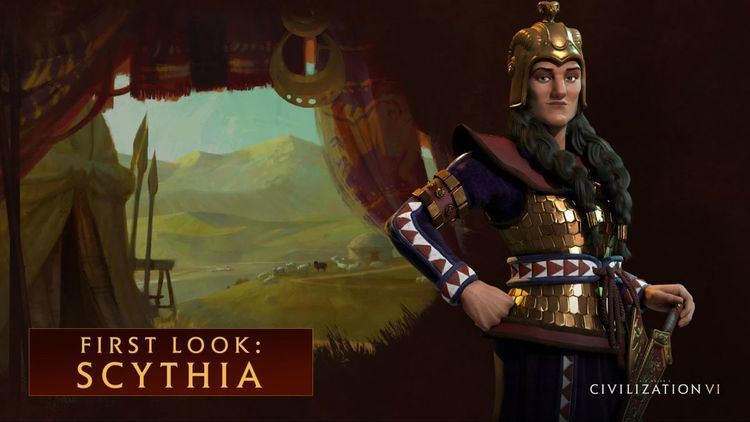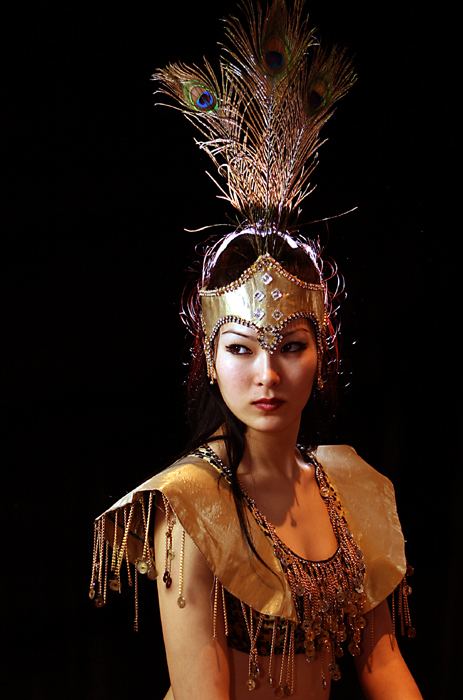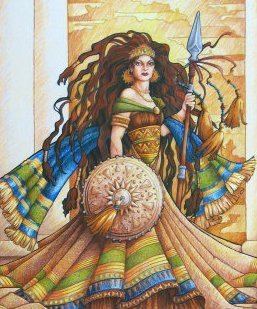Children Spargapises | ||
 | ||
Similar Cyrus the Great, Herodotus, Gorgo - Queen of Sparta, Hōjō Tokimune, Darius I | ||
Filthy s civ6 how good is tomyris scythia
Tomyris (/ˈtoʊmᵻrɪs/; from Eastern Iranian: تهمرییش Tahm-Rayiš), also called Thomyris, Tomris, Tomiride, or Queen Tomiri, was a Massagetean ruler who reigned over the Massagetae, a Scythian pastoral-nomadic confederation of Central Asia east of the Caspian Sea, in parts of modern-day Turkmenistan, Afghanistan, western Uzbekistan, and southern Kazakhstan. Tomyris led her armies to defend against an attack by Cyrus the Great of the Achaemenid Empire, and defeated and killed him in 530 BC (although this is debatable since Herodotus mentions that this was only one of many stories relating Cyrus the Great's death).
Contents
- Filthy s civ6 how good is tomyris scythia
- Civ 6 tomyris declaration of war
- History
- Legacy
- In popular culture
- References

Tomyris is mentioned by several ancient writers, among whom the first is Herodotus. She is also mentioned by Strabo, Polyaenus, Cassiodorus, and Jordanes.

Civ 6 tomyris declaration of war
History

The names of Tomyris, and her son Spargapises, who was the head of her army, are of Iranian origins. Since the historians who first wrote of her were Greek, the Hellenic form of her name is used most frequently.

Many Greek historians recorded that she "defeated and killed" the Persian ruler Cyrus the Great, the founder of the Achaemenid Empire, during his invasion and attempted conquest of her country. Herodotus, who lived from approximately 484 to 425 BC, is the earliest of the classical writers to give an account of her career, writing almost one hundred years later. Her history was well known and became legendary. Strabo, Polyaenus, Cassiodorus, and Jordanes also wrote of her, in De origine actibusque Getarum ("The origin and deeds of the Goths/Getae") .
According to the accounts of Greek historians, Cyrus was victorious in his initial assault on the Massagetae. His advisers suggested laying a trap for the pursuing Scythians: the Persians left behind them an apparently abandoned camp, containing a rich supply of wine. The pastoral Scythians were not used to drinking wine—"their favored intoxicants were hashish and fermented mare's milk"—and they drank themselves into a stupor. The Persians attacked while their opponents were incapacitated, defeating the Massagetae forces, and capturing Tomyris' son, Spargapises, the general of her army. Of the one third of the Massagetae forces that fought, there were more captured than killed. According to Herodotus, Spargagises coaxed Cyrus into removing his bonds, thus allowing him to commit suicide while in Persian captivity.
Tomyris sent a message to Cyrus denouncing his treachery, and with all her forces, challenged him to a second battle. In the fight that ensued, the Massagetae got the upper hand, and the Persians were defeated with high casualties. According to Herodotus, Cyrus was killed and Tomyris had his corpse beheaded and then crucified, and shoved his head into a wineskin filled with human blood. She was reportedly quoted as saying, "I warned you that I would quench your thirst for blood, and so I shall" (Hdt 1.214) Xenophon, on the other hand, says that Cyrus died peacefully in his bed, and a number of other sources report different causes of death.
Legacy
Eustache Deschamps added Tomyris to his poetry as one of the nine Female Worthies in the late 14th century.
The history of Tomyris has been incorporated into the tradition of Western art; Rubens, Allegrini, Luca Ferrari, Mattia Preti, Gustave Moreau and the sculptor Severo Calzetta da Ravenna are among the many artists who have portrayed events in the life of Tahm-Rayiš and her defeat of Cyrus and his armies. She is one of the subjects grouped under the Power of Women topos by art historians.
The name "Tomyris" also has been adopted into zoological taxonomy, for the tomyris species-group of Central Asian Lepidoptera.
590 Tomyris is the name given to one of the minor planets.
In popular culture
The given name Tomris or Toʻmaris has also become very popular in Central Asia and Turkey in the 20th and 21st centuries. Toʻmarisning Koʻzlari (The Eyes of Tomyris) is a 1984 book of poems and stories by Uzbek author Xurshid Davron. Toʻmarisning Aytgani (The Sayings of Tomyris) is a 1996 book of poetry by Uzbek poet Halima Xudoyberdiyeva.
Tomyris leads the Scythian civilization in the 2016 4X video game Civilization VI developed by Firaxis Games.
